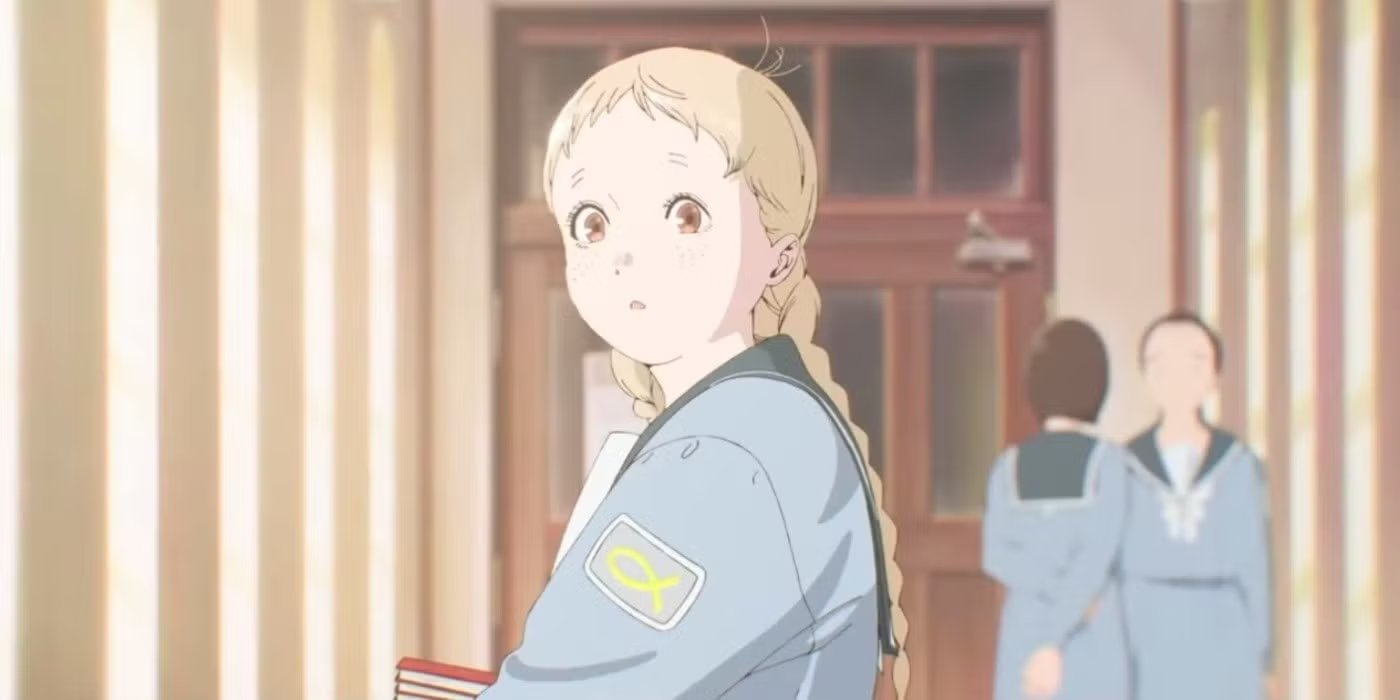The new Japanese animated film “The Colors Within” is a fascinating coming-of-age story that brings a new twist to the wider genre, blending youth music culture and teenage angst with an artistic verve worthy of the big screen.
The 100-minute feature follows Totsuko, a young high school student at a private, all-girls Catholic school in Japan, which kicks the movie off well on a foot most English-speaking audiences would never expect. (Japan, being mostly non-Christian, has nevertheless had Church-run schools for centuries.)
The school in the film, run by an order of nuns, is authentically modern, apparently set sometime after the Second Vatican Council but without any specific identifiers. Moreover, “The Colors Within” is not strictly a religious film but carries a number of spiritual themes that help anchor the narrative. More on that later.
Totsuko experiences the neurological phenomenon known as synesthesia. In other words, she sees people—and music—as colors. I hesitate to describe it as a condition from which she “suffers,” mostly because the film presents it not as a disability or as something connected to one, but simply as what makes her unique.
From the trailer, which I viewed some months before seeing the film, I assumed this phenomenon would dominate the film. No dice. The story is about young people finding their way in life despite their own shortcomings, uncertainty, and family makeup. Synesthesia is but one element among many that help build a character arc.

Tostuko and two of her peers, Kimi and Rui, are musicians who happen to find each other in a position to start a band. The film largely deals with their journey from practice stages to a final performance that they hope will do good for the community.
The film is chock-full of adolescent emotion, almost to the point of eliciting secondhand embarrassment for the main character. She is clumsy, naive, and overconfident all at once, and all with the sort of drama one comes to expect from the anime genre—and from real-world private school life.
Overall, “The Colors Within” has little in the way of tragedy, violence, or even interpersonal conflict. Perhaps there is no need for manufactured elements when telling a story so naturally full of agitation and ennui. It is high school, after all.
Not to be overlooked is the animation itself, which melds beautifully with the overall project. In fact, it all but represents visually what Totsuko experiences internally, and not just in the scenes meant to make this explicit. The color schemes, theory of motion, and integration with an adventurously modern score from Kensuke Ushio makes for a near synesthetic experience in the theater.
I am very much used to the Studio Ghibli style of Japanese animation and film, and “The Colors Within” is decidedly not that. There is no science fiction element fueling dazzling artistic displays—despite the name of the animation studio, Science Saru—nor is there a hero-villain dichotomy helping to build suspense. The movie instead gives remarkable visual flair to a very human story about a young Catholic who just wants to build friendships and honor God the best way she knows how.
The script is superb, especially when dealing with the often thorny topic of religion. If ever a film was a beautiful homily without ever approaching “preachy.” Interestingly, the director (Naoko Yamada) is not a Catholic, but she clearly did her research on what undergirds the religion. Scripture is found on the lips and in the hearts of the characters as they navigate ethics, shame, and even the meaning of sacred song.
It’s hard not to recommend this film, given its excellence on the sonic, visual, and narrative levels. For the anime fan, it’s perhaps an unexpected foray into uncharted territory. For the music fan, it’s a compelling story of experimentation and determination. For everyone else, it’s just a darn good movie that tugs the heartstrings much like a guitar.
Nate Tinner-Williams is co-founder and editor of Black Catholic Messenger.









